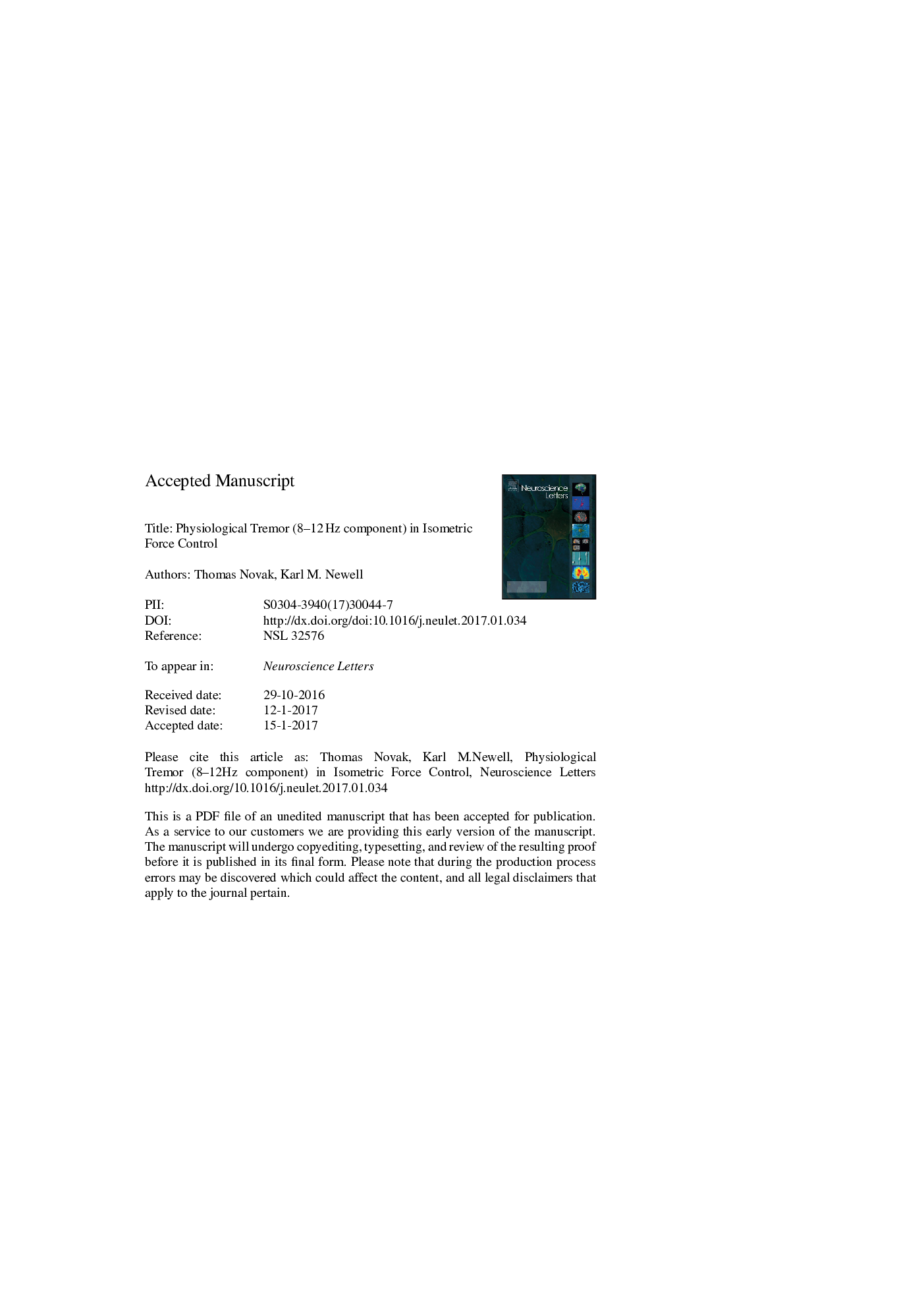| Article ID | Journal | Published Year | Pages | File Type |
|---|---|---|---|---|
| 5738510 | Neuroscience Letters | 2017 | 27 Pages |
Abstract
The experiment investigated the influence of physiological tremor (8-12Â Hz band) on the variability of isometric force control as a function of force level and hand dominance. Subjects were instructed to match a constant force level target line on a computer screen and minimize error in a uni-manual isometric finger abduction task at 5%, 25%, 45%, 65%, and 85% of their maximal voluntary contraction (MVC). The experimental protocol was performed independently with the left and right hands in separate blocks of performance. Tremor amplitude was enhanced at an increasing rate with increments of force level and was correlated with both performance outcome (Root mean square error - RMSE) and time-dependent regularity (Sample Entropy) of the force signal. No significant findings in force variability (dispersion or irregularity) were found between the dominant and non-dominant hands. Physiological tremor has a small but direct influence on the dispersion and time dependent structure of the variability of isometric force control but its relative influence on force amplitude decreases with increments of force level.
Related Topics
Life Sciences
Neuroscience
Neuroscience (General)
Authors
Thomas Novak, Karl M. Newell,
